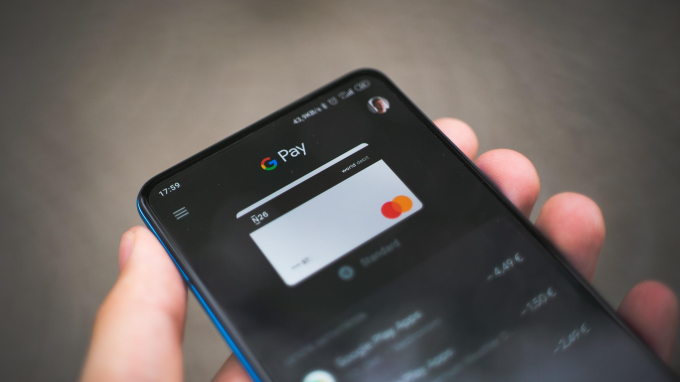More people than ever have a smartphone filling their back pocket these days, so the rise of mobile payment platforms is perhaps no surprise. In fact, more than 150 million people in 30 countries pay with Google Pay every month. So, what’s the big deal and how does Google Pay work? Let us explain.
What is Google Pay?
Before it was relaunched in 2015, Google Pay was primarily used for mobile payments: once a credit or debit card is added to the app, you can tap your phone to contactless readers to pay. Although this is still a huge part of the service, it now comes with a whole host of new features. Along with adding your credit or debit card details, you can now store loyalty cards and make peer-to-peer payments.
Google Pay also now allows people to order food from over 100,000 restaurants and make payments at some petrol stations without even having to touch the machine.
How does Google Pay work?
Google Pay uses something called tokenisation when making in-store or online payments. It goes something like this:
- When a user adds a card to their Google Pay app, the system requests a token from the bank to represent the card, which is then encrypted and ready to be used straight from your phone.
- To make a purchase, a customer can either tap their smartphone on a point-of-sale terminal or pays via the mobile app or a website using the Google Pay option. Google Pay then responds with the customer’s token which is validated by the card network.
- The merchant’s bank and the customer’s bank then use existing customer information to complete the transaction. Et voila! The whole process is completed in just a couple of seconds.
For online payments, you can accept Google Pay transactions on desktop, mobile or tablet devices. Google Pay transactions can be processed through Safari, Google Chrome, Firefox and Microsoft Edge web browsers, whereas Apple Pay transactions can be processed on Safari only.
What are the advantages of accepting Google Pay?
Enabling your customers to pay with Google Pay could prove beneficial to your business. Here are some possible advantages:
- Extra security – Google Pay means your customers can make authenticated payments with a mere glance or touch. There are additional security benefits; for example, your customers’ card number and identity won’t be shared with you, which may be appreciated by your regulars.
- Shorter checkout times both in-store and online. We’ve not got a stopwatch, but it’s fair to say that Google Pay could be faster than rummaging around for cash or inputting a PIN.
- Customer satisfaction – your customers may appreciate the ease with which they can shop on a mobile device through Google Pay.
- Greater convenience – your customers won’t need their card details, as these are saved in the digital wallet.
Is there a payment limit on Google Pay?
Technically, there is no official Google Pay limit on transactions, but some UK retailers set their own limit of up to £45. However, as of October 2021, customers have been able to authorise payments of up to £100 following a decision made by HM Treasury and the Financial Conduct Authority.
Is Google Pay safe?
Encryption and passkeys are used to safeguard all the financial information you store on your Google Pay app, like your credit and debit cards, to help you checkout faster, both online and in-store.
When you make a purchase online with your card details, you have to rely on the vendor to make sure they’re providing the right security measures to protect you against credit card fraud. But with Google Pay, this same information is always encrypted and stored away securely on Google’s servers.
If you make a purchase in-store, you will usually be prompted to unlock your phone to do so. Google then assigns a temporary unique virtual account number that gets shared with the merchant rather than your actual account information. And for an extra level of security, the app will automatically remove this virtual account number if you turn off your screen lock.
While no one can ever guarantee complete protection against fraud, thanks to the many security measures in place, Google Pay may be safer than using your card.
How can I accept payments with Google Pay?
Sounding good so far? You may be happy to hear that Tyl’s card machines are compatible with not only Google Pay, but Apple Pay and Samsung Pay too. And remember: you can also take payments through our online online payment gateway.
Here are some of our card readers that accept digital wallet payments:
- The all-in-one Clover Flex
- The countertop card machine – Ingenico Desk 3500
- The portable card machine – Ingenico Move 3500
Fees and eligibility apply.
Disclaimer
This has been prepared by Tyl by NatWest for informational purposes only and should not be treated as advice or a recommendation. There may be other considerations relevant to you and your business so you should undertake your own independent research.
Tyl by NatWest makes no representation, warranty, undertaking or assurance (express or implied) with respect to the adequacy, accuracy, completeness, or reasonableness of the information provided.
Tyl by NatWest accepts no liability for any direct, indirect, or consequential losses (in contract, tort or otherwise) arising from the use of the information contained herein. However, this shall not restrict, exclude, or limit any duty or liability to any person under any applicable laws or regulations of any jurisdiction which may not be lawfully disclaimed.
